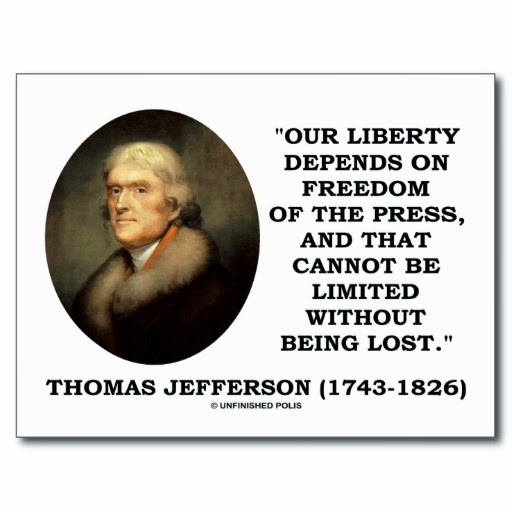Let's start with some stuff that is important to understand, although not enough people do:
U.S. senators are elected to six–year terms, and the terms are arranged so that one–third of the Senate is on the ballot in any given election. In 2018 the electoral map has few Republicans facing the voters as the senators who are up for re–election won their current terms in 2012, the year Barack Obama was re–elected. That was a pretty good year for Democrats.
If those senators were re–elected in 2012, their previous election would have been in 2006, which was a
big year for Democrats. That was the year they seized control of both chambers of Congress for the first time in more than a decade.
The Democrat senators who are on the ballot in 2018 had favorable winds at their backs the last two times their seats were on the ballot. Their party gained two Senate seats and eight House seats in 2012 — five Senate seats and 34 House seats in 2006.
The political terrain wasn't as favorable for Republicans in those years as it was in others, and fewer were successful. As a result, fewer Republicans hold the Class 1 seats that will be on the 2018 ballot.
Senate terms are also staggered so that no state must elect both its senators in the same election year — unless there is a midterm vacancy that needs to be filled.
Sen. Al Franken's stated intention to resign in January puts Minnesota in that comparatively rare category in 2018.
Amy Klobuchar, Minnesota's senior senator, is seeking a third six–year term in her Class 1 seat. Franken's seat is a Class 2 seat that would be slated to face the voters again in 2020, but because he is leaving the Senate, his appointed successor will be on the ballot in the next election. The voters will decide who will represent them until 2020 — at which time the winner of the 2018 race will have to decide whether to seek a full term.
Such two–fer Senate elections are rare — some states have never had one — but this will be the second time for Minnesota. The first time was 40 years ago — in 1978. Then, as now, both seats were held by Democrats.
Does that 40–year–old election have any relevance to 2018?
One of the seats had belonged to Sen. Walter Mondale, who was elected vice president in 1976. Minnesota Gov. Wendell Anderson resigned so his lieutenant governor could become governor and appoint Anderson to fill the Senate vacancy for the last two years of the term.
The other seat had belonged to former Vice President Hubert Humphrey, who was elected to the Senate after leaving the vice presidency and then re–elected in 1976; then he died of cancer in January 1978. His widow was appointed to the seat until an election could be held later that year. The winner would hold the seat until 1982. Muriel Humphrey chose not to run, and Minnesota Democrats selected a rich trucking firm owner to be their standard bearer.
Minnesota has a reputation as a deep blue state in 2017, and it was quite blue in the '70s, too, although it did vote for Richard Nixon in 1972 and had voted for other Republicans for president in the first half of the 20th century; still it hadn't elected a Republican to the Senate since 1952.
Republicans used that to their advantage. They made the point that Minnesota's leading statewide offices were held by people who had
not been elected to them — and the seats would all be on the ballot in 1978. That was the voters' big chance, the Republicans said, gleefully asserting that Minnesota's Democrats would face
"something scary" in 1978 —
"an election."
That wasn't entirely fair. Democrats had been elected to all those offices the last time they were on the ballot, and Democrats were appointed to fill the vacancies. It wasn't as if someone was circumventing the political will of the voters.
(The party affiliation may have been the same, but the philosophy wasn't always. That trucking firm owner who was nominated when Mrs. Humphrey decided not to run was more conservative than most Democrats were then or are now.)
In 1976 Minnesota gave the Carter–Mondale ticket nearly 55% of the vote. The voters knew that, if the ticket won the election,
someone would replace Mondale in the Senate. They voted for the Democratic ticket, anyway. When Humphrey was re–elected that same year, it was no secret that he was sick; nearly three–fourths of Minnesotans voted for him, anyway.
What hurt the Democrats in 1978, though, was Anderson's blatant move to gain Mondale's seat. I suppose it hinted of entitlement to many, and the voters clearly didn't like that. Only 42% of them supported Anderson in November.
Muriel Humphrey, by her own admission, was no politician. She was a politician's wife, and she played that role graciously for decades, then dutifully kept the seat warm until the election. Would the magic of the Humphrey name have carried the day and kept the Senate seat in the Democrats' hands if she had not decided to step down?
We'll never know, but that businessman who won the party's nomination when Mrs. Humphrey declined to run only got 36% of the vote in November.
When the Senate convened in January 1979 Minnesota was represented by two Republican senators for the first time since the Truman administration.
Republicans completed the sweep by winning the governor's office as well, and the 1978 election came to be known as the
"Minnesota Massacre."
Now, to an extent, voters throw tantrums in these special elections and vote contrary to their usual patterns. Like a fever, though, it passes, and voters return to their roots by the time the next election is held. We saw this in the early part of this decade when Massachusetts elected a Republican to serve the remainder of Ted Kennedy's term, then chose a Democrat when the seat was on the ballot for a full six–year term.
I suspect we will see that same phenomenon — albeit in reverse — in Alabama in 2020, when Democrat Doug Jones must decide whether to seek a full six–year term.
The dynamics were different in Minnesota 40 years ago, though. The Republican who was elected to complete Humphrey's term, David Durenberger, went on to win two full terms and then retired after 16 years in the Senate. Rudy Boschwitz, the Republican who defeated Anderson, was re–elected once.
If Minnesota threw a tantrum in 1978, it had staying power. It remains to be seen whether the voters of Minnesota will throw a similar tantrum in 2018.
Political tantrums require catalysts, and those catalysts vary from state to state. The circumstances that led to Scott Brown winning Ted Kennedy's seat in 2010 were different from the ones that propelled Doug Jones to victory in the race for Jeff Sessions' seat or led to the Minnesota Massacre.
At present there appear to be no storms on the horizon for Minnesota Democrats, but as I observed
more than a year ago, in spite of voting Democratic in 10 consecutive presidential elections, deep–blue Minnesota wavered a few times and was a candidate for
flipping to the other party in 2016.
It didn't, but it came close. A week after I posted that, Minnesota voted Democrat for the 11th straight time — but Hillary Clinton's share of Minnesota's vote was the smallest for a Democrat since her husband in 1992.
And Bill Clinton could point to the presence on the ballot of a credible third–party candidate who took nearly a quarter of Minnesota's vote.
Who knows which issues may emerge in 2018 to help or hurt Tina Smith, Franken's appointed successor? Smith, who was once regarded as a gubernatorial prospect, will become a senator as an indirect result of the emergence of sexual harassment as a political issue and a
direct result of credible accusations that were leveled at her predecessor.
But what if not–so–credible accusations are made that cast a shadow over the issue? That could lead to voter backlash.
Are there any Tawana Brawleys lurking out there in Minnesota?








No comments:
Post a Comment